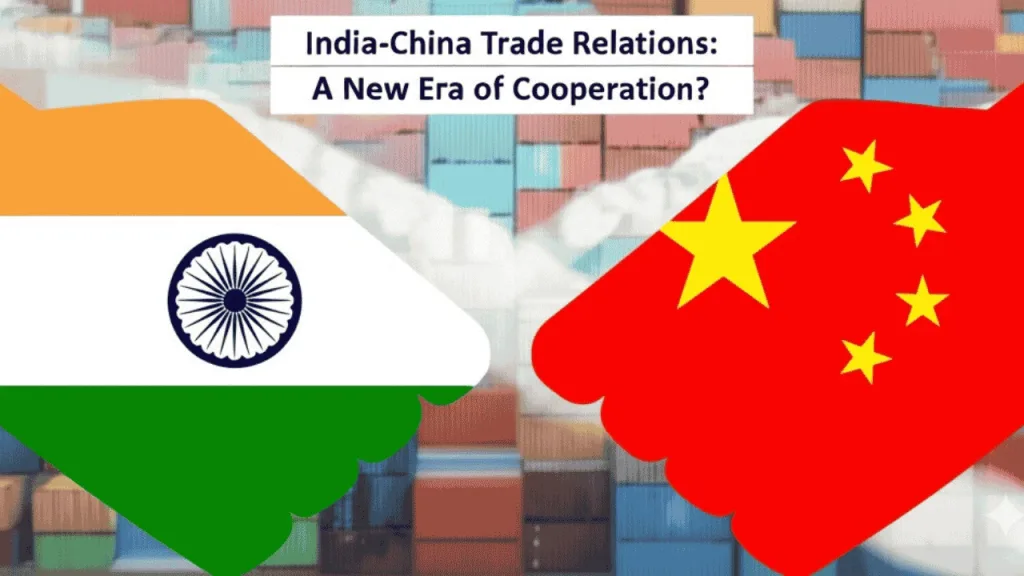China Extends Market Access to India—A Golden Opportunity or a Hollow Gesture?
As the trade deficit between India and China continues to soar, now approaching $100 billion, China has extended a surprising offer to India: increased access to its vast consumer market. This diplomatic overture is being heralded as a potential turning point for bilateral trade relations, but is India truly ready to capitalize on the opportunity? Let’s explore the implications of this move and whether India can seize the moment.
The Trade Imbalance: A Growing Divide
Why the India-China trade deficit is a cause for concern.
India’s trade deficit with China has reached troubling heights in recent years, hovering around $100 billion. Despite India’s growing economic influence, its exports to China remain woefully low. In the fiscal year 2024–25, India exported only $14.25 billion worth of goods to China—14% less than the previous year. This is starkly contrasted by China’s dominant export of manufactured goods to India, including telecom components, industrial machinery, and electronics.
The imbalance remains a key challenge in the economic relationship between the two countries. India, primarily an exporter of raw materials—iron ore, marine products, and certain chemicals—finds itself on the losing side of the trade equation, sending essential goods only to buy back high-value finished products. This one-sided trade flow has raised alarm bells within India, with critics urging a stronger stance on tariffs and anti-dumping measures to protect domestic industries.
China’s Diplomatic Overture: A Calculated Move
China’s gesture to India: Opening the market or just a strategic play?
In response to growing international trade pressures, particularly from the United States, China has made a strategic move: it has offered to open its market to premium Indian products. This proposal is seen as an olive branch, aimed at addressing the widening trade gap while fostering goodwill between the two nations.
However, the offer comes at a time when China is already grappling with its own economic challenges. The ongoing trade tensions with the U.S. and rising domestic costs of manufacturing have prompted China to explore new avenues for growth. By extending market access to India, China hopes to alleviate some of the trade strain while strengthening ties with a key regional partner.
The Opportunity: Can India Capitalize on It?
Will India rise to the challenge and meet China’s demand for premium products?
The question remains: is India ready to seize the opportunity presented by China’s offer? While the prospect of expanded market access sounds promising, India’s export capabilities remain limited. To date, India’s exports to China have largely been confined to raw or semi-processed goods—commodities like iron ore, chemicals, spices, and castor oil. These products, while essential, do not carry the same added value that China’s finished goods bring to the table.
If India is to fully benefit from China’s offer, it will need to shift its focus from raw exports to high-value, manufactured products. This will require significant investment in India’s manufacturing sector, including technology upgrades, improved quality control, and a deeper understanding of Chinese consumer preferences. India must not only produce more but also produce better—and tailor products specifically for the Chinese market.

The Tariff Debate: Protectionism vs. Strategic Growth
Is India’s approach to trade policy hindering its growth potential?
As India grapples with its growing trade deficit, some economists and policymakers have called for stronger protectionist measures—imposing higher tariffs and anti-dumping duties to curb the influx of cheap Chinese goods. The argument is clear: India cannot continue to subsidize Chinese manufacturing while its own industries struggle to compete.
However, this defensive stance may be shortsighted. By focusing on trade restrictions, India risks isolating itself from valuable growth opportunities. Instead, India’s policymakers must consider a more nuanced approach—one that encourages increased value-added exports, boosts domestic manufacturing, and takes advantage of China’s willingness to open its market.
Diplomatic Developments: A New Chapter in India-China Relations?
China’s diplomatic signals indicate a shift in its approach to India.
Beyond trade, China has also made significant diplomatic gestures, extending a warm invitation for Indian Prime Minister Narendra Modi to attend an upcoming summit in China. This marks a clear signal from Beijing that it is ready to engage with India at the highest levels of government.
A recent Chinese spokesperson commented on the upcoming summit, emphasizing that China is eager to host Modi and work towards mutually beneficial agreements in both trade and international diplomacy. The invitation also suggests that China sees India as a key partner in fostering regional stability and economic growth.
Looking Ahead: A Critical Moment for India
India’s response to China’s offer will shape its economic future.
China’s offer to open its market presents both a challenge and an opportunity for India. To truly benefit from this potential boon, India must embrace the need for comprehensive economic reform. It must focus on increasing its manufacturing capacity, enhancing the value of its exports, and developing strategic trade policies that position India as a competitive player in the global market.
This is not just a trade issue—this is a moment for India to rethink its economic strategy, streamline its manufacturing capabilities, and position itself as a strong, independent economic force in the years ahead. The question is not whether China is ready to buy, but whether India is ready to sell.
Poll Question:
Which country is projected to become the world’s fastest-growing aviation market by 2026?
Join the conversation and share your thoughts on this exciting topic. Comment below or engage with us on social media.
